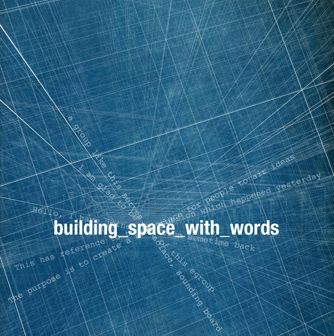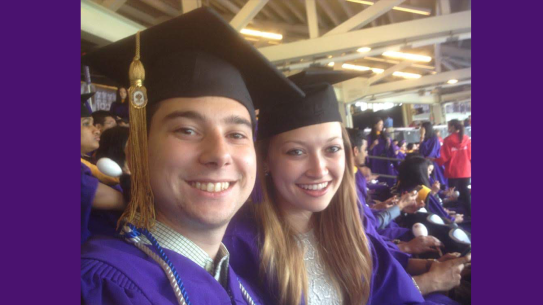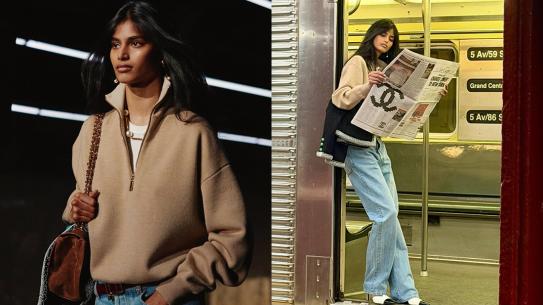Offline/online art installation to pose questions about virtual interaction
 |
Like its co-creator, Anne-Laure Fayard, a social scientist whose background spans the disciplines of philosophy to human-computer interaction, Building_Space_with_Words doesn’t fit into a neat category.
The month-long art installation set to premiere at Polytechnic Institute of NYU on March 4 is part experiment, part research artifact, part think-piece.
Ms. Fayard, an NYU-Poly assistant professor of management, and co-creator, Aileen Wilson, an associate professor of art and design at Pratt Institute, designed Building_Space_with_Words as a hybrid offline/online environment that asks:
What happens when the physical properties of space are changed and discourse becomes the main material?
In other words, how do people build a sense of place (or what the artists describe as “we-ness”) in online settings (e.g., Facebook, blogs, Gchat) when, unlike in the offline world, all they have is words?
See
Ms. Fayard and Ms. Wilson will transform an ordinarily staid space into a maze of semi-transparent hanging panels covered in flickering digital text. Some text is expected to stream in real-time from blogs and other online venues focused on topics related to the creations and interactions that take place in virtual communities/exchanges.
A significant portion of text will come from the online companion piece to the installation, the Building_Space_with_Words blog (http://blogs.poly.edu/bsww/). For several months, blog contributors from the fields of art, architecture, design, organizational behavior, and sociology, have posted articles, questions, and comments related to space — how it’s created, modified, experienced, and even studied.
The artists intend for the text “to envelop the visitor, creating the feeling of ‘being in discourse’ and to suggest the physicality (or materiality) of words and the idea of living in language, while also to suggest the virtuality of online interactions.” They describe the transparency of the panels as a “suggestion of the non-materiality of space that supports the words much more than the material representation of the walls.”
Hear
Because sound – or the lack of sound – plays such an important sensory role in how a space (virtual or “real”) is experienced, the artists have included an audio component. Visitors will hear a soundtrack composed of recordings of public spaces, of “online” sounds (e.g., keyboard and mouse clicks), and voices reading excerpts of texts related to the exhibit’s central themes.
The voice element will feature different accents and the readings will be in different languages. The effect will “remind visitors of how virtual space is global and how our definition of geography is redefined in online settings.”
Touch
Touch screens will allow visitors another way to “enter” Building_Space_with_Words by taking them on a “semantic voyage.” The artists have worked with a developer to build a software application that will unite the exhibit’s physical space with its virtual space (the Building_Space_with_Words blog), and with the larger World Wide Web.
Each Building_Space_with_Words blog post is associated with “tags,” or keywords that describe its content. Visitors can select one or more of those keywords to see articles, videos, images, and other content that web users have “tagged” with the same word. Exhibit visitors can then select a content item they’re interested in, see its tags, pick one of them, receive another batch of related content, and, in theory, repeat the process ad infinitum.
Learn
A strong educational and research bent to the installation fits with its campus setting. NYU-Poly will host visits for students from local middle- and high-schools. And the exhibit itself, which builds on journal articles the artists and other scholars have previously published, is meant to challenge the traditional peer-review process of presenting research.
Ms. Fayard and Ms. Wilson want “the language of art to provide a medium to present, embody, and materialize ideas from the social sciences.”
“Quite often,” says Ms. Fayard, “discourse from the social sciences offers a theoretical framework for a work of art, putting words around the piece and verbalizing and theorizing its meaning. In Building_Space_with_Words the approach is reverse.”
Building_Space_with_Words will be open to the public March 5 to 27.
Building_Space_with_Words Sponsors: The Downtown Brooklyn Partnership, L.F. O’Connell Associates, KPMG, Phillips Lytle LLP, Brooklyn Experimental Media Center at NYU-Poly (BXMC)and Agent 16
Building_Space_with_Words Media Partner: Seed Magazine www.seedmagazine.com




